Hulu's Series Ramy Is Making a Serious Case for Sustainable Fashion
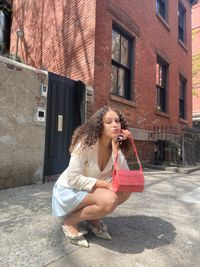

Style and cinematography, for many, have been a vehicle for storytelling, self-expression, self-reflection, and even a spiritual experience. No other modern-day series, in my mind, quite shows how these two art forms serve that purpose quite like Hulu's original series Ramy. The dramedy follows the life of Muslim American protagonist Ramy Hassan and his family and friends as they navigate their relationships to their faith, their identities, and the general plights of living in the twenty-first century. Since its release in 2019, it's been met with critical acclaim for its ability to make its viewers cry, cheer, cackle, and cringe all in one episode. But more than visceral reactions it can conjure from its viewers, it provides an even deeper service: representation.
It's no secret that in Hollywood and the West, there's not only a lack of authentic representation of the Muslim community but that xenophobic and islamophobic beliefs often inform it. So, having a series that is created by, follows, and explores the diaspora of the Muslim community is groundbreaking in and of itself. You can understand why I jumped at the opportunity when I was offered the chance to speak with the show's costume designer, Nicky Smith, about season three of the series.
Ahead, you'll hear from Smith about the importance of representation on-screen, modest dressing, how sustainability informed her creative process, and even what it was like working with Bella Hadid.
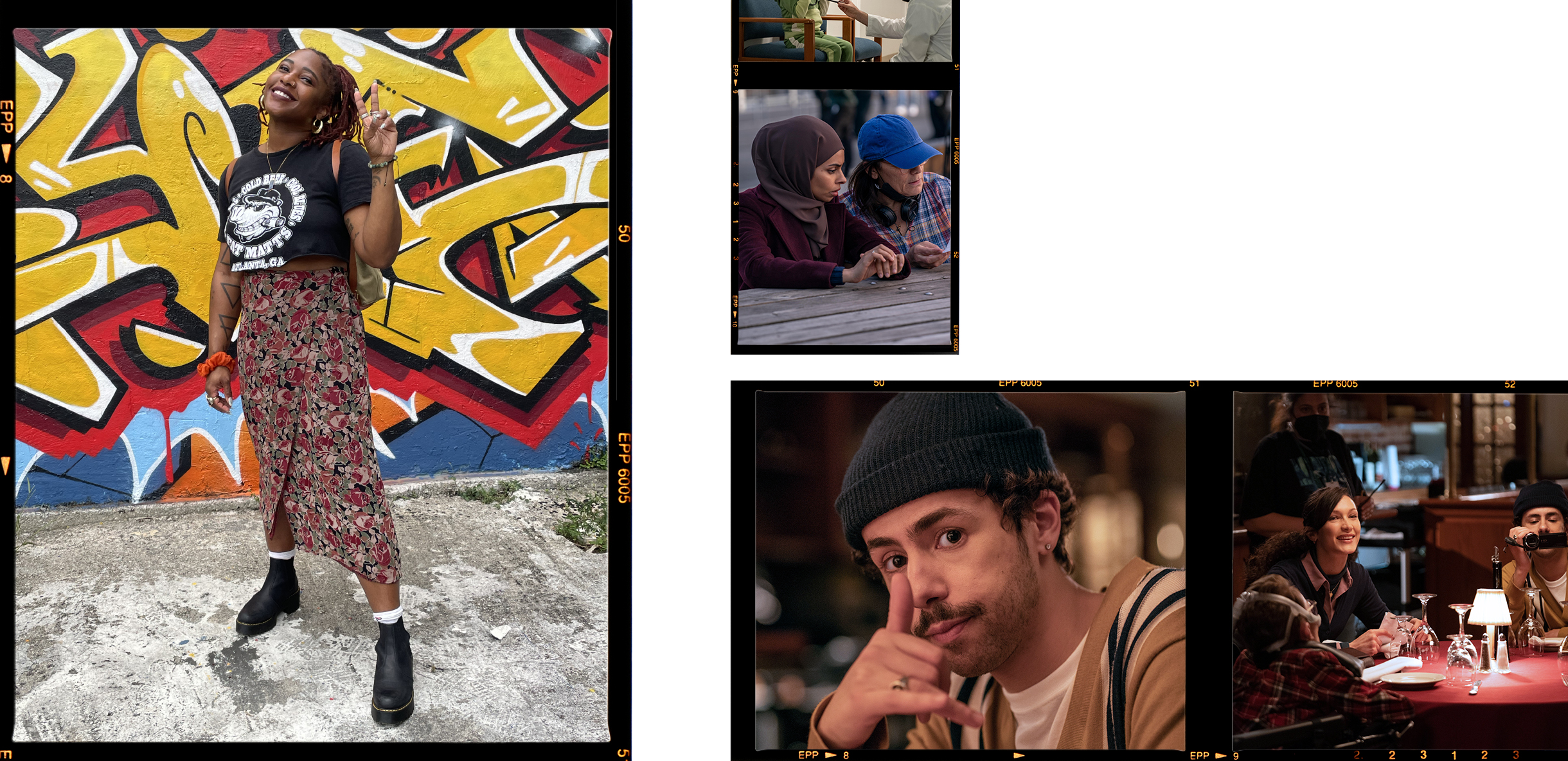
Can you tell our readers a little about yourself and how you got into costume design?
In undergrad, I thought I would be a biochemist, but that didn't work out. I took a theater class along the way and thought, "This is cool." I loved that you can create a character that tells this larger story and that this beautiful experience stays with viewers and leaves them engaged when it's over. I switched my major to costume design and went on to get a master's degree and work at the Metropolitan Opera.
That's a significant career shift and not an easy one considering that there weren't a lot of women of color in costume design when you first started. What was it like to initially navigate that space as a first-generation American woman of color?
When I first showed up for job interviews, navigating spaces as a Brown person was interesting. Because I go by Nicky Smith, everyone would expect a different Nickey Smith to walk in, but when my little Brown faces show up, they'd be like, "Oh." A period costume designer back then was not traditionally a Brown girl with tattoos, piercings, and dreads—it was a specific type of person that I was not.
A lot of the time, I felt like there wasn't space for us to tell our own stories, there were people who were telling everyone's stories, but it wasn't us. So to see the drastic changes that have happened over the past five years is lovely to witness. There's a lot of room for communities to represent themselves, especially women of color, to take the forefront. We've seen that through costume designers like Ruth Carter, Gersha Phillips, and Sharen Davis. Many talented Black costume designers, from established to young, have paved the way for people like me, and I'm so grateful for that.
Well, I'd add you to that list of women who are paving the way because you've worked on many incredible projects that foster that sense of community storytelling. Has there been one project you've loved working on the most?
Such a tricky question, as I know all aspects of costume design. I've done everything from working on The Tonight Show to being a House Stylist for VH to being a lead assistant costume designer for Pose. But if I had to pick, I'd say when I did a campaign for Drag Race All-Star Season 2. It was so wonderful because I supported these talented queer artists at the top of their field. And it was all very collaborative because there were no pre-filming fittings; everything was done on the spot and shot that day. It was an exhilarating experience.
Creating costumes on the spot is insane, but so is the general design process. Would you say your approach to creating for creating costumes for contemporary shows, reality, or period pieces is different if it all?
Ideally, you never want to do things because you need a little preparation, so creating costumes on the fly is a different experience. But when it comes to working on a modern series, it does have the same fast pace, as you have to fit actors on the same day of shoots and you need to have a range of times to play with (versus dealing with period pieces which are definitely harder and require more time because you're sourcing particular components to fit that era). The dream is to not be fitting things the day of, but there are always a lot of moving parts to consider.
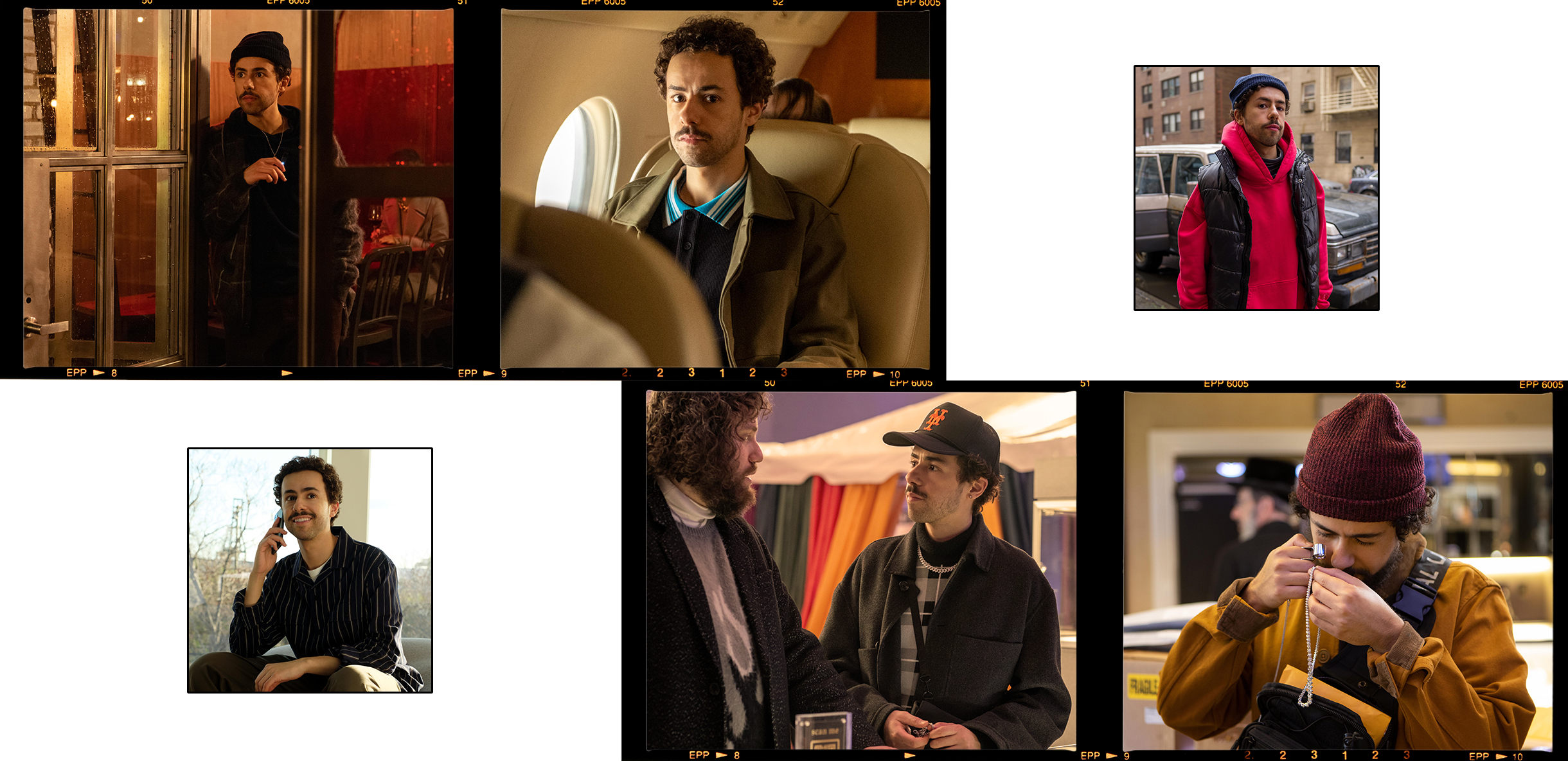
We have to get into your creative process for Ramy. What was your workflow like for creating the costumes for each episode?
For Ramy, it helped that we had all the scripts in the beginning so we knew where things would go and how they would play out, which allowed my team to prepare as much as possible before we shot. For example, we did a closet fitting for each main character to establish some of their wardrobe basics for the entire season. And then, for specific episodes, if there were a breakout scene (i.e., the Shark Tank spoof scene in episode 3), we'd plan specific fittings for that. Breaking it up this way took the pressure off the entire wardrobe department because if you don't break things up, how do you ever climb that mountain?
Since you just joined the Ramy series this season, what compelled you to join this project?
Dana Covarrubias, the former costume designer, decided to leave the show to create costumes for Hulu's other breakout series, Only Murders in the Building. And since we share a lot of mutual friends in the industry, I was referred to the role. Before my interview with Ramy Youssef, the show's producer, and star, I ended up binge-watching the show and was instantly in love with this series. Coming into a series that's so well-established can be dicey at times, but Dana did such an incredible job creating this entire world with these beautiful characters that it made me compelled to join the series. I was also so moved by my discussions with Ramy about his perspective of this community's culture, what he wanted season three to be, and all of the weird and cringey moments he had in mind. It was the team's vision that made joining this project a no-brainer.
Other than having this wonderful canvas for creating costumes, what about the actual storyline was interesting to you?
The characters have so much nuance and depth; they're multifaceted. They don't behave in one singular way; there's a lot of subtext between how people show up for how they want to be perceived by the other characters versus how they truly are. And that juxtaposition allows a designer to use the costumes to tell a different story from what the moment is perceived as by the characters.
Over the past few seasons, the audience has gotten to know the series's characters. Did that familiarity impact how you approached the costumes? How did you want your role to expand upon those character nuances?
As a designer, you want to work on projects that viewers love because you know you have an audience with an appetite for what you're creating. But beyond the familiarity with the characters, as costume designers, we're telling the story with the actor. So with each actor, I'd sit down and present a costume board, and we'd talk about what felt suitable for the character, their evolution over the series, and where we thought the character would be by the end of the season. Take, for example, Ramy's sister in the series, Deena Hassan, played by May Calamawy. We spent time talking about how she's in school and this new phase of her life but struggling, and we had to choose to either have her show up as someone who looks like she's messy or put-together (we chose the latter). Calamawy and our team made that decision because it feels right for who that character is and a larger representation of the pressures put on first-generation women to have it "together."
I was also thinking about how Deena's character this season is a prime example of respectability politics and how immigrant and Brown communities feel obligated to look put-together, even when things are falling apart. Would you agree that her character feels that pressure?
There is so much pressure on any young woman of color, especially those who are the first generation and are "supposed" to be everything for their whole family. You have to dress for how people perceive you and, more specifically, how your family perceives you. That's how it is, so it was great to explore that idea onscreen through Deena's costumes this season.
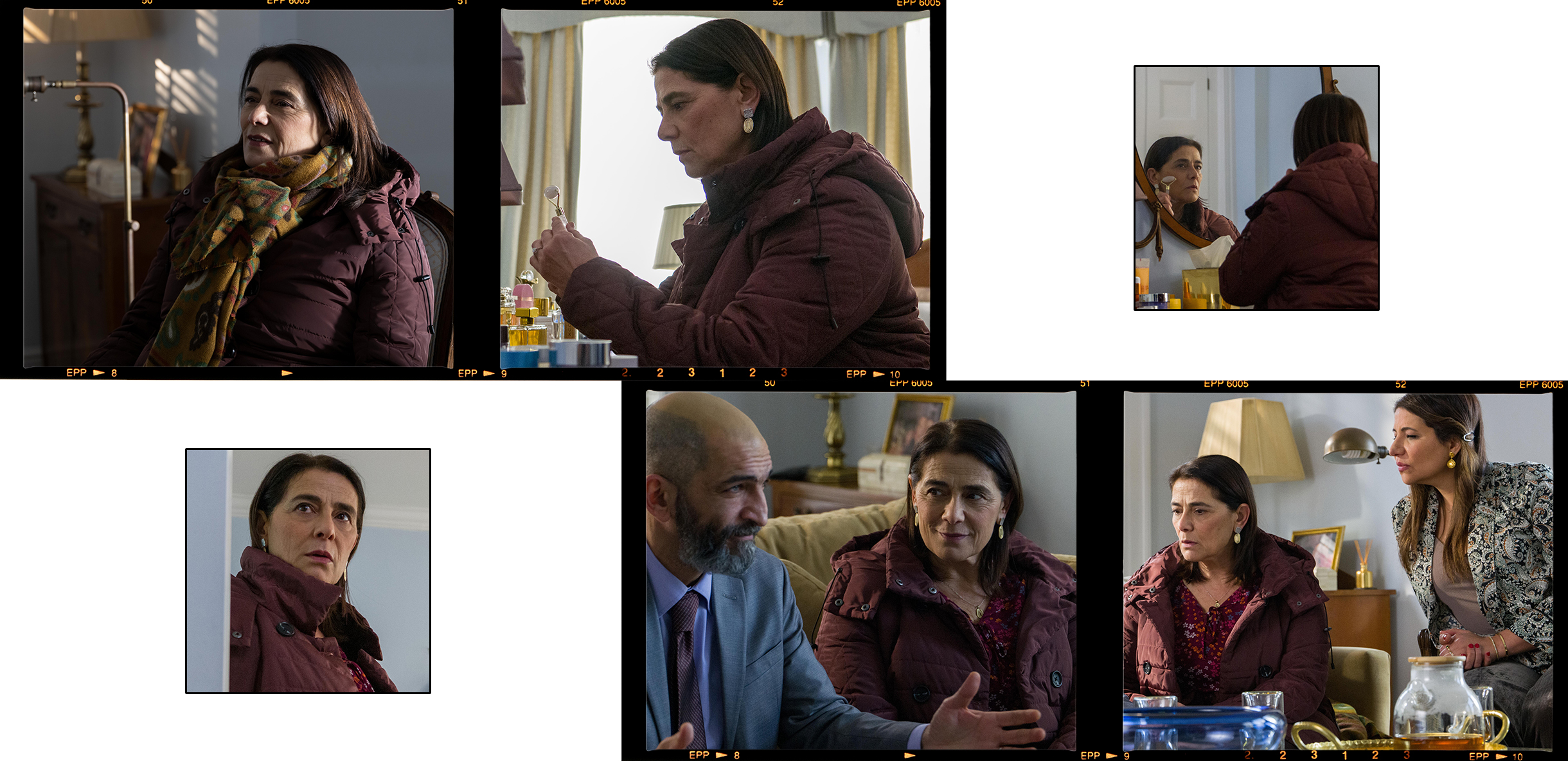
In addition to exploring the experiences of first-generation Americans in this series, it also explores the Muslim faith. It aims to remove xenophobic stereotypes. For you, how did you want the costumes to play a part in furthering that narrative?
I wanted to show that Muslim culture is not an antiquated subset. It's a very modern, present thing. And I think we were able to showcase that through, for example, episode 8, where it was a Muslim conference. That episode had everyone from children to rappers, but more importantly, it showed all these variations of people in the Muslim community. From Afromuslims to Indian Muslims, we saw nationalities from around the world reflected in that room.
Showing that diaspora is essential, I also think it's important to research and learn about a community before representing them on screen. As a costume designer, did you aim to ensure your work accurately depicted this community?
When you're talking about a marginalized, misunderstood, or often misrepresented community, you first reach out to the community for support when creating a show like this, but also have that community be a part of what you're making. We were lucky to have a wardrobe team member, a Palestinian American woman, helping inform our choices throughout the series. We also held a hijab training camp, where everyone from designers to production assistants learned how to tie a headscarf properly. And then we also partnered with this Black-owned Muslim brand called Nuura Collection, which makes instant hijabs that we were able to showcase throughout the series. Working with them was terrific, and I felt it spoke to our entire team's larger mission of giving a voice to this community.
There are also a lot of misconceptions about modest dressing. For you, as you worked on this project, how did you hope to challenge those stereotypes through your costumes?
I grew up in Queens near three mosques, so I feel like the Afro Muslim community, in some ways, was a part of my extended community when I was growing up. And I think that if you're not exposed to this beautiful culture, don't know about the Muslim faith, or even understand what dressing modestly means, it's easy to fall prey to stereotypes about modest dressing. But hopefully, if you watch a show like this or even look at top-tier Instagram-style stars like Noore, you'll see their outfits are fire. People don't identify fashion with modest culture, but they do go well together.
That's what's beautiful about this series is that it shows that Muslim culture is not a monolith. When did you know you had nailed depicting modest dressing realistically?
Having people from the community say, "You did it—it was a vibe." As a costume designer and a woman of color, I want to represent people correctly, so to have people reach out and tell me what I did is reassuring.
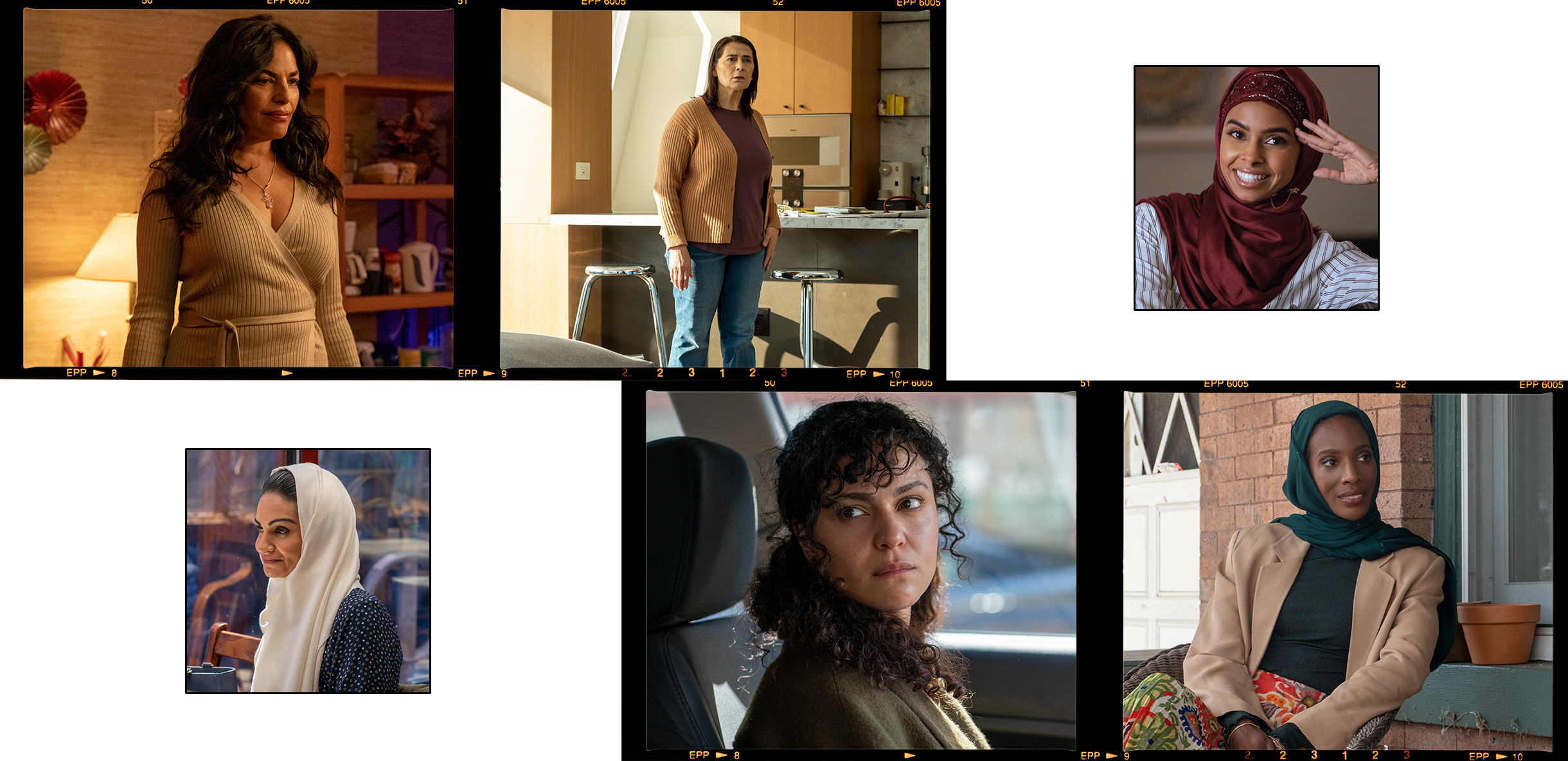
What's lovely about this series is that it does show the full spectrum of the Muslim diaspora in the series (especially for women). For you, how much do the costumes in your mind reflect the characters?
I think costumes tell so much about who the character is. I tried to shop at the stores where the characters would shop and present the quality of clothes the character would own. For example, with Zanib (played by MaameYaa Boafo) this season, we know she's now a single mother. Her father (played by Mahershala Ali) is away, so we wanted her wardrobe to reflect her life changes, so we put her in a blazer in episode 8. Or for Maysa Hassan (played by Hiam Abbass), we see her struggling this season in her marriage and finances, so we thought it would be great to show that discomfort through episode 3. She's still wearing an old puffer coat and shoes inside her friend's house, which is meant to show her socioeconomic standing and general emotional discomfort. And finally, we have a character like Yasmina (played by Rana Roy), a modern woman who's always dressed modestly and wearing a hijab publicly. But this season, we get to see her at home casual as she's dealing with marital issues with Ahmed (played by Dave Merheje), which is a special moment because having that rare insight into the home of a young Muslim couple is something we don't get to see on television. I also think, at large, it's rare to see these stories about Muslim women, in general, and each character's style does tell the story of so many different people in this community.
In addition to creating costumes for the series stars, we also saw a ton of newer characters introduced this season, including Lena, played by Bella Hadid. What was it like to work with Hadid on her debut acting project?
It was really easy. Whenever you have people who are a part of the cultural zeitgeist join a series, you may never know which way it will go. They'll often want to bring their personal character into the character, and sometimes it works, but it doesn't. But that wasn't Hadid. Early in discussions, she told us, "I'm not Bella; I'm an actor. I want to ensure that whatever you put me in, if you think it's right for the character, I'm down to wear anything." And mind you, there were some sad turtlenecks like an unfortunate camel wool skirt, but she had no ego attached to it. She was there to collaborate and was generally so excited to be there, which was refreshing. Even on set, she'd be hugging the crew and playing games with them in her trailer—she was genuinely kind, making the work environment much more enjoyable.
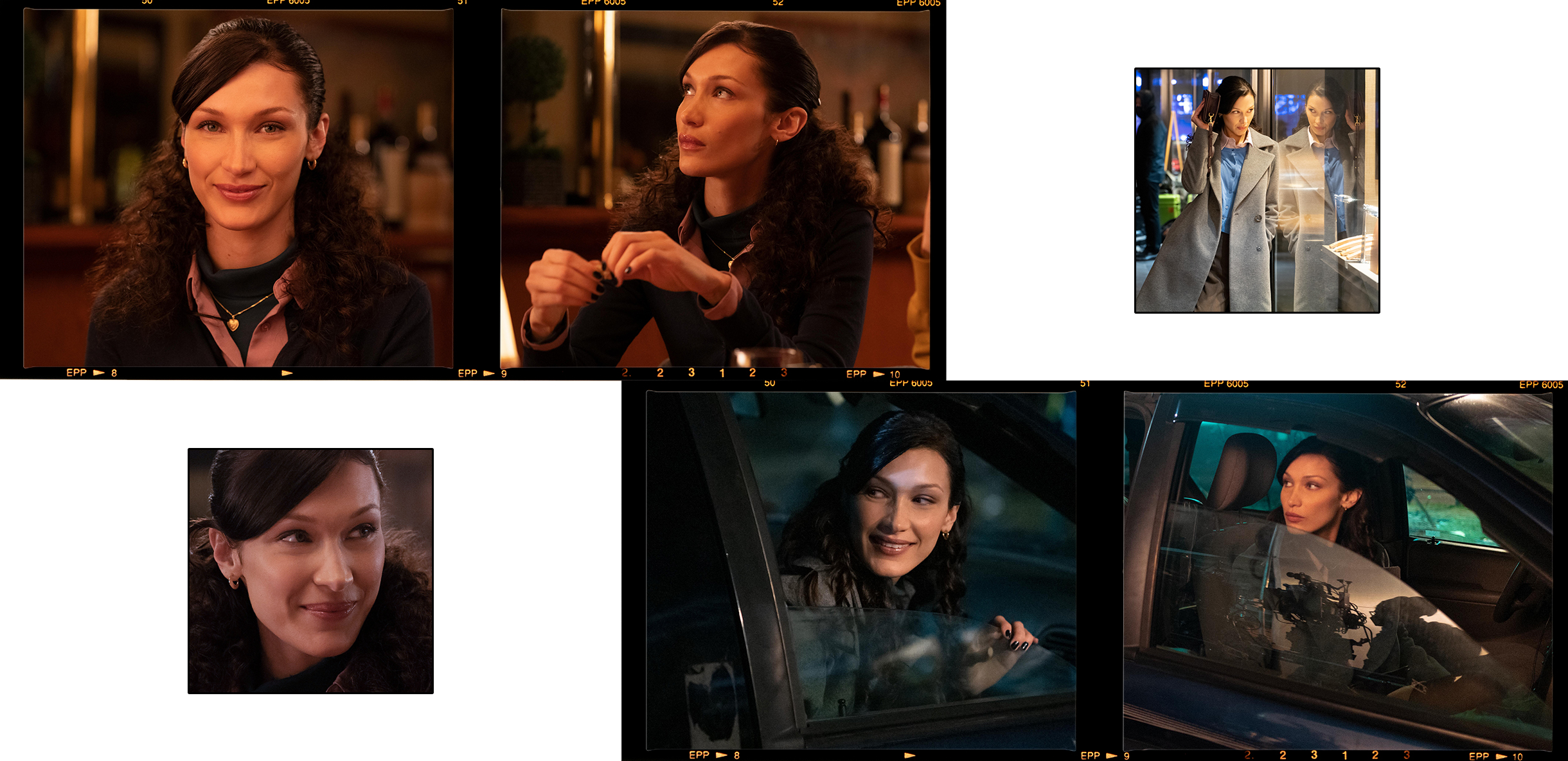
And it seems like everyone on set was very open to mine where the costumes would take them and where the story would take them. Wouldn't you agree?
I would agree, and I would say that one of the actors that surprised me the most in terms of how down she was to go there with the costumes was Sarita Choudhury, who plays Olivia this season. She is an iconic actress in her own right, but to see her take her role as a sex worker on the series so seriously and be so open to having conversations about what her character should wear and why she'd choose to wear what she does, and what the occupation entails was truly special.
This season, we see everything from a sex worker to someone devout in their faith. For you, how important was it to show the nuances of how women asset their choices when it comes to clothing?
It does show that whole spectrum, and for each character and each actor on the show, we made sure to approach each with that in mind. We wanted to strive to show how each woman is their own person—there's no monolith for women in the Muslim faith and women, in general. And one of the fantastic things about this show is that so many women on this series identify as Muslim, if not most. So they brought themselves and the cultures into the fittings shown on screen.
How do you ensure that each outfit looks great on-screen when working with so many different characters with such different approaches to dressing?
I always tell the actors that I want them to feel comfortable at the end of the day. I want them to feel like they are the character because there's nothing worse than seeing a character on camera, and you're like, "They're not happy." So I want to create a safe space for them to voice who they think the character is and meet in the middle to collaborate. They know the characters better than I do, it's their culture and community, so I'm just focused on ensuring they're comfortable.
In addition to ensuring the actors felt comfortable this season, you also discussed how sustainability was a top priority when creating the costumes. So how would you define sustainability?
Sustainability has been a part of the costume design profession forever, but only recently did the industry realize the reference term. We're always sourcing vintage pieces or borrowing clothing. For example, if you have a scene with cops, you're not going to go out and buy a stock of uniforms; you're going to rent them or ask another friend in the industry to borrow their costumes. I've always aimed to be resourceful and intentional with my work's impact on the environment (and the budget). I've been lucky enough to have a community of fellow designers that I could reach out to help with this series so that we're not buying more things; we're just using what is already existing in the world.

Beyond the environmental and economic benefits of sourcing your costumes secondhand for the series, what do you feel the show gained from this approach to design?
I tried to shop at the stores that the characters would shop at and present the level of quality of clothes the character would own, and for immigrant communities, that often means thrifted clothing. Growing up, my parents always took care of their clothing—it was washed, ironed, and faded, but it was worn. And I think having secondhand thrifted clothes gives you that texture, uniqueness, and originality that you will not find anyplace else. It's also more authentic to the characters because it's unrealistic to see someone who is supposed to be a single mom wearing high-end designers—that's not the story. If that's the story, then, by all means, go for it, but that's not what Ramy is about. We wanted to use secondhand pieces and focus on color, silhouettes, and styling to put together outfits that felt like they realistically represented the experiences of first-generation Americans and immigrants.
What does it mean to you to help bring the story to life? And what do you hope people will take away from your work on this series?
It was a wonderful experience to bring such a multifaceted story to life and work with such an incredible team. Yes, I am the costume designer, but I am one of many on this team. And without my assistant costume designer, tailor, wardrobe supervisor, or production coordinator, there's no show. So, to them, I am forever grateful. And at large, I hope that viewers can see that collaboration on-screen—that they can see how each team member brought their perspective to this series and made it a visual feast. As a first-generation American, when I have the privilege to tell stories centered explicitly around the first-gen experience, it's essential to me that we add things to the visual language of the show so that people with the cultural background will get and resonate with it, and I hope people in this community can watch this show and see themselves in it.
Next: Fall TV Just Got Better Thanks to These 5 Performances
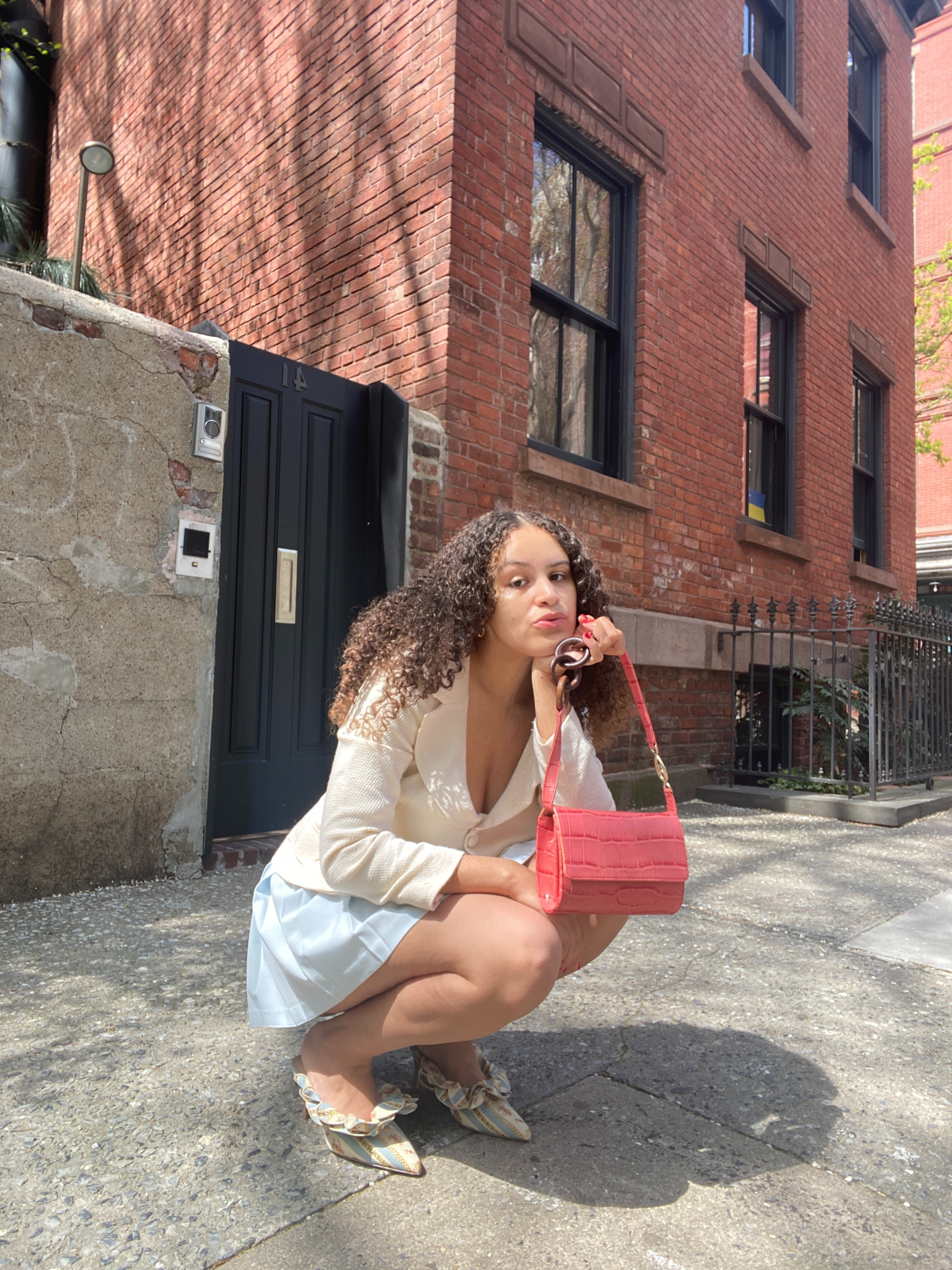
Jasmine Fox-Suliaman is a freelance writer and editor living in New York City. What began as a pastime (blogging on Tumblr) transformed into a lifelong passion for unveiling the connection between fashion and culture on the internet and in real life. Over the last decade, she's melded her extensive edit and social background to various on-staff positions at Who What Wear, MyDomaine, and Byrdie. More recently, she’s become a freelance contributor to other publications including Vogue, Editorialist, and The Cut. Off the clock, you can find her clutching her cell phone as she's constantly scrolling through TikTok and The RealReal, in search of the next cool thing.